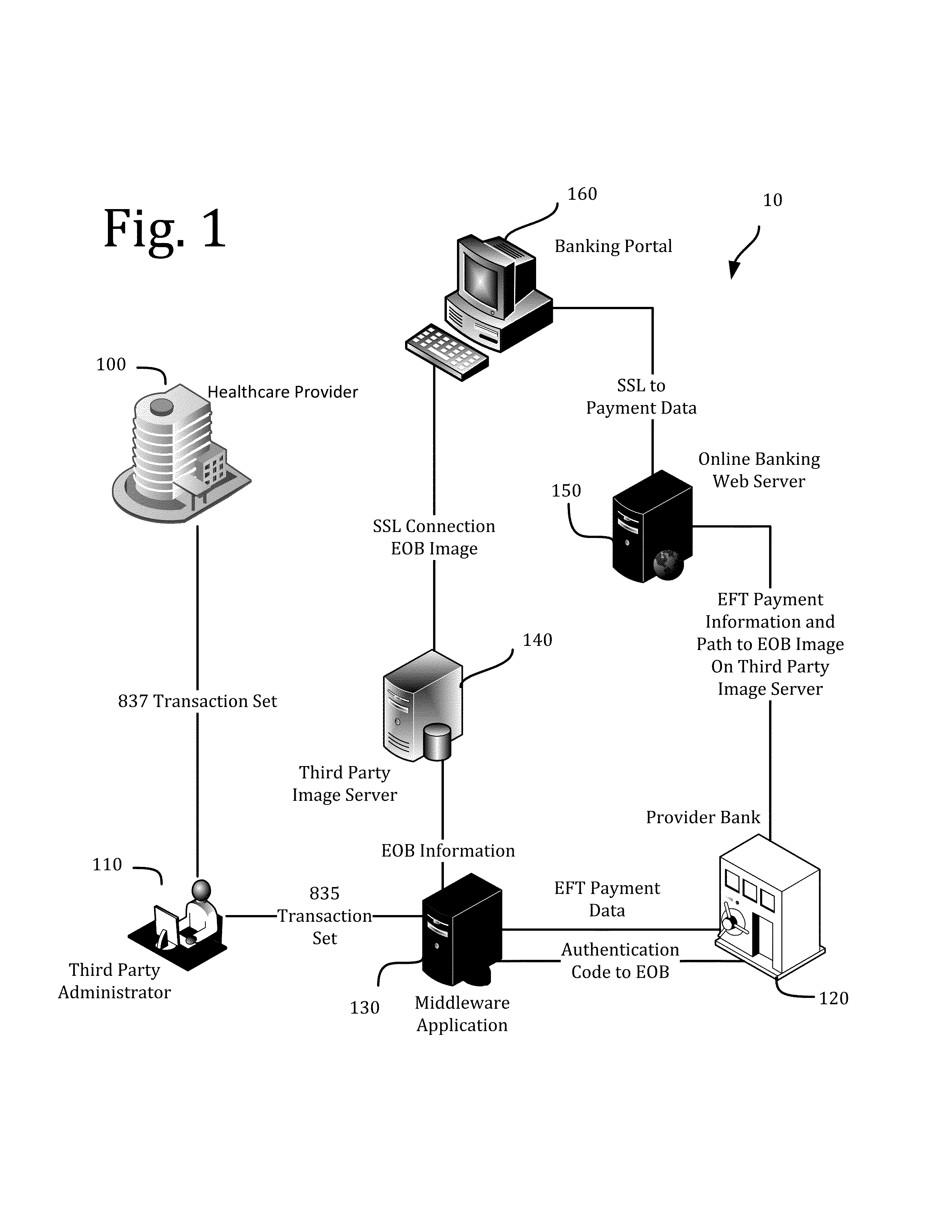Integrated payment and explanation of benefits presentation method for healthcare providers
a healthcare provider and integrated payment technology, applied in the field of electronic payment systems, can solve the problems of affecting the service provider's claim settlement, the difficulty of providers reconciling the eft deposit to the paper eob, and the consuming of substantial time and resources. , to achieve the effect of less latency and more responsiveness
- Summary
- Abstract
- Description
- Claims
- Application Information
AI Technical Summary
Benefits of technology
Problems solved by technology
Method used
Image
Examples
Embodiment Construction
[0028]The novel method is denoted as a whole in FIG. 1 by the reference numeral 10. Healthcare provider 100 treats a patient and sends an 837 transaction set to third party administrator (TPA) 110. TPA 110 adjudicates the claim and returns an 835 transaction set to provider bank 120. However, provider bank 120 has middleware application 130 intercept the 835 transaction set which decodes the EOB information and passes on the EFT payment data and an authentication code that links the payment to the EOB which has already been extracted. The EOB information is passed to a third party image server 140 which renders the EOB text into an image formatted to the dimensions of a check image presented through virtually all online banking portals. Online banking web server 150 accesses the EFT payment information from provider bank 120 and presents the EFT information at banking portal 160 via an SSL connection. However, online banking web server 150 also has path information to the EOB image ...
PUM
 Login to View More
Login to View More Abstract
Description
Claims
Application Information
 Login to View More
Login to View More - R&D
- Intellectual Property
- Life Sciences
- Materials
- Tech Scout
- Unparalleled Data Quality
- Higher Quality Content
- 60% Fewer Hallucinations
Browse by: Latest US Patents, China's latest patents, Technical Efficacy Thesaurus, Application Domain, Technology Topic, Popular Technical Reports.
© 2025 PatSnap. All rights reserved.Legal|Privacy policy|Modern Slavery Act Transparency Statement|Sitemap|About US| Contact US: help@patsnap.com



